The Sukhothai Kingdom (1238-1438 BCE) laid much of the foundation for the art and culture of modern Thailand, and its gracefully ruined capital is one of the country’s most popular historical attractions. Fifty-five kilometers to the north was the Sukhothai Kingdom’s second city of Si Satchanalai, another splendid Buddhist holy center in those days. Though it’s smaller and a little less impressive than its famous twin to the south, Si Satchanalai Historical Park (8.30am-4.30pm; 250B) gets but a small fraction of the visitors. The resulting slow vibe makes it the more enjoyable of the two sites to visit.
You won’t have the whole park to yourself, but you probably will be all alone at many of the individual ruins. You can hit the following highlights from each of the park’s three distinct zones in a day and still have time to veer off to visit some of the many smaller ruins that catch your eye.
Chaliang
Tucked into a dramatically sharp bend of the Yom River, Chaliang is the older half of the ancient city, with inhabitation of this naturally fortified spot going all the way back to at least the Iron Age. At its heart is Wat Phra Si Ratana Mahathat, its huge “corn-cob” prang making it the most striking monument in all of Si Satchanalai. It originated as a smaller 13th-century Khmer Buddhist temple, but was later expanded and modified by both Sukhothai and Ayutthaya kings. It’s best visited in the morning when its east-facing front is bathed in sunlight.
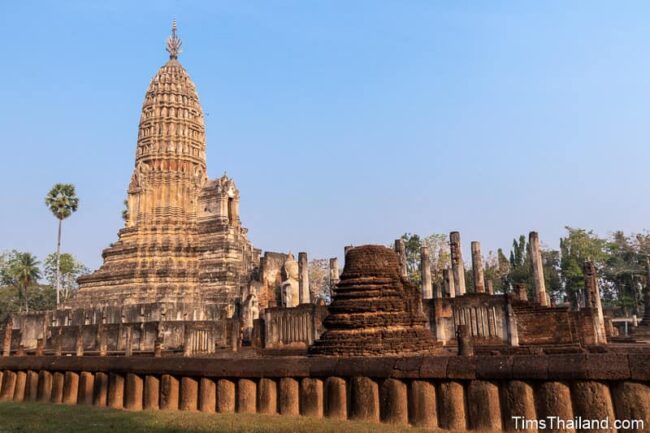
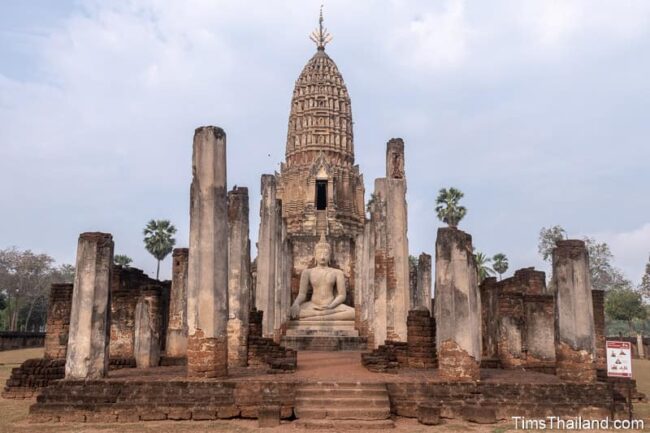
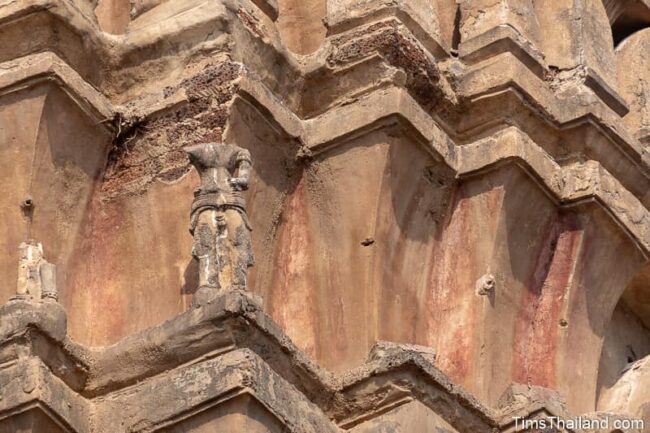
A second, smaller Khmer temple ruin nearby, Wat Chao Chan, is much more typical of that time, though it too got some Sukhothai additions.
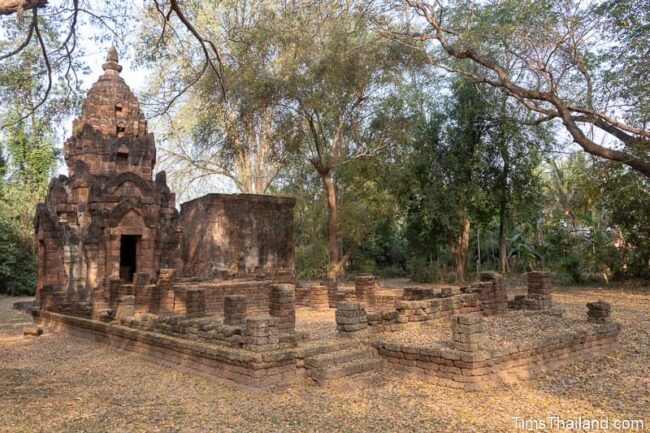
Between these Khmer sites is the much older Wat Chom Chuen Archeological Site showing what this eight-meter deep, third- or fourth-century CE burial site looked like after it was excavated. The resin skeletons look just like the real ones they replaced.
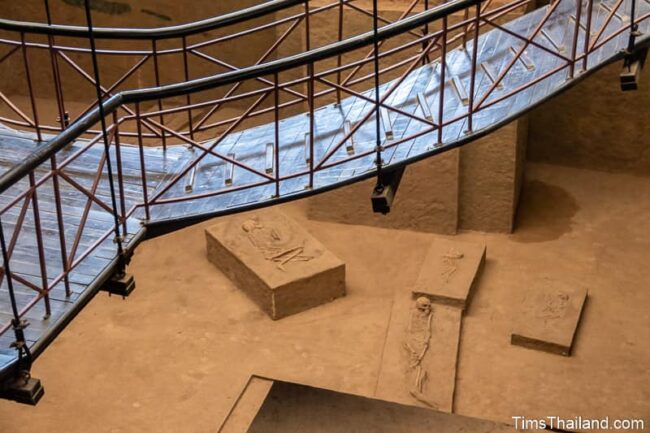
The Royal Compound
The city grew to the west and this was the heart of Si Satchanalai for most of its years. Cross through the Ramnarong Gate, part of the royal compound’s original fortifications, and you quickly come to the Ayutthaya-era Wat Nang Phaya, the first temple along the city’s main axis. You can climb up into the large bell-shaped stupa to see its holy receptacle and there are original stucco designs on the one remaining wihan wall.
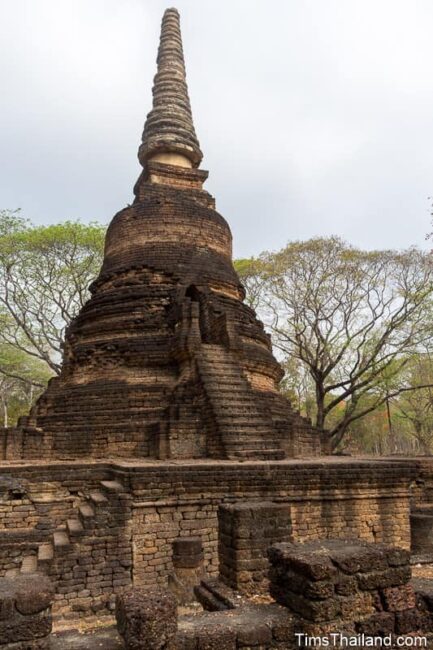
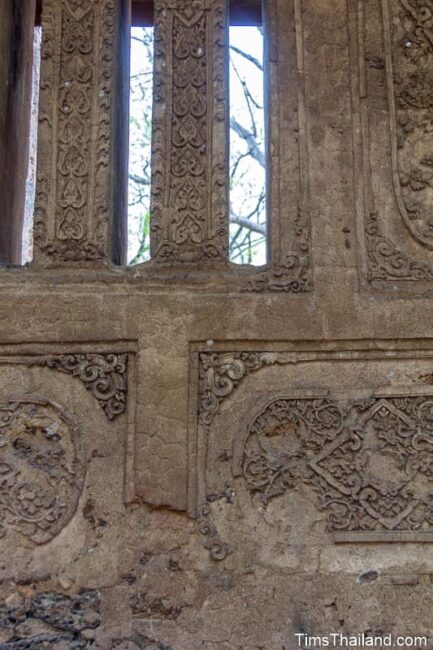
Take a peek across the road at Wat Lak Muang in front of what is believed to be the old palace grounds. The unusual almost cross-shaped stupa is the present village’s city pillar shrine and may have also served this purpose in the past.
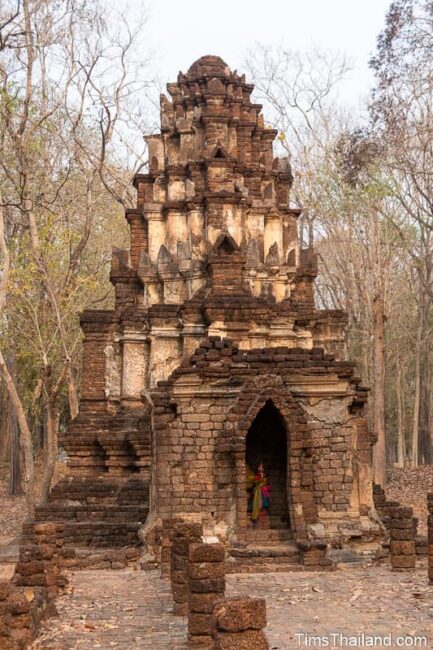
Wat Chedi Jet Thaew has a beautiful tall lotus-bud stupa at its heart, but it’s the many subordinate stupas around it that makes this temple special. It’s assumed these held the ashes of royalty, like was done at Wat Suan Dok in Chiang Mai. Take your time here because there are still quite a few remnants of original stuccowork.
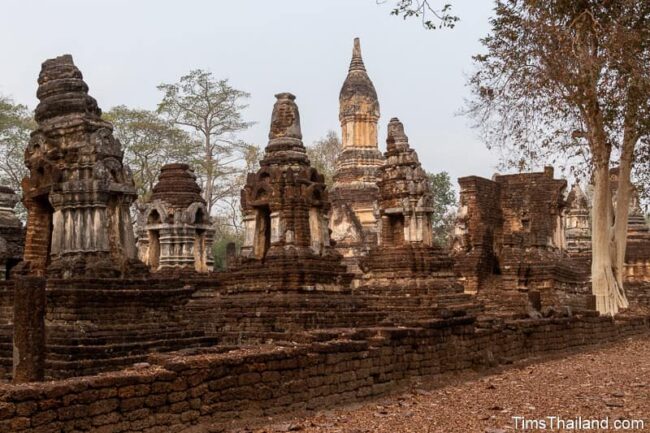
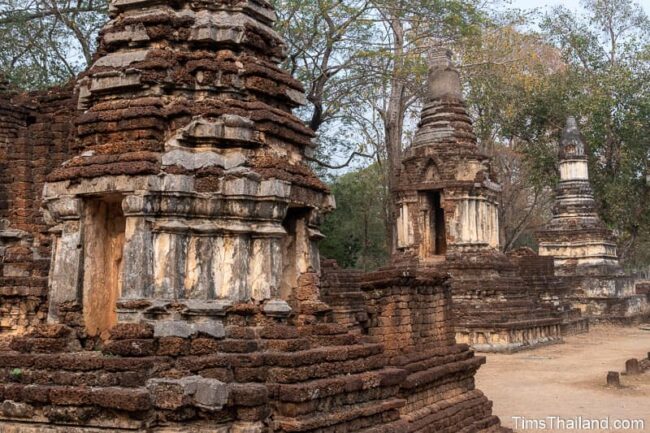
The most important temple in ancient Si Satchanalai, and the most interesting ruin today, is the “Temple Surrounded by Elephants,” Wat Chang Lom. The name comes from the thirty-nine large tuskers around the stupa’s base that, unlike typical Sukhothai-style stupa elephants, are freestanding and full-bodied. Right above them are meditating Buddhas, and barely noticeable in the little niche under the spire is a ring of small walking Buddhas.
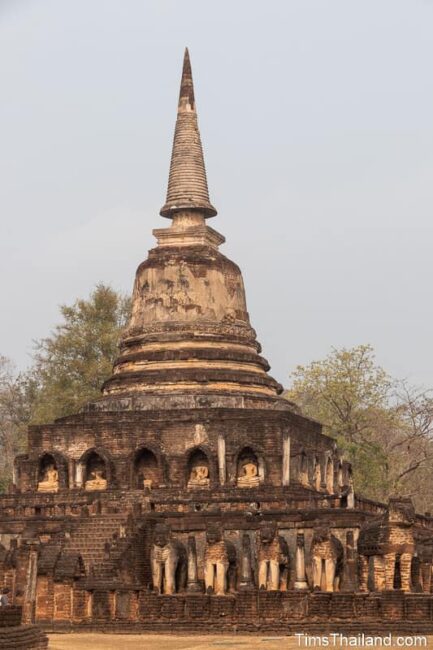
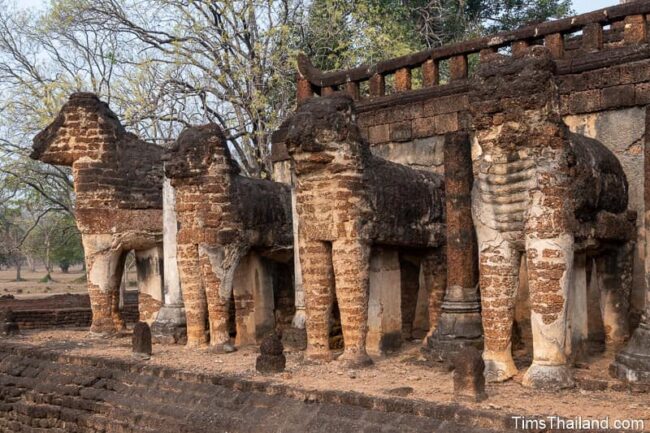
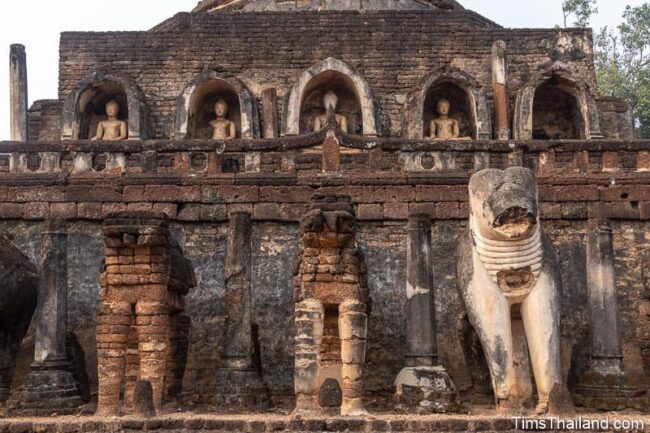
A grand staircase climbs the long, low hill behind Wat Chang Lom to Wat Khao Phanom Phloeng. “Fire-Sacrifice Mountain Temple” has a mandapa in excellent condition and a very serene Buddha image gazing east toward the river.
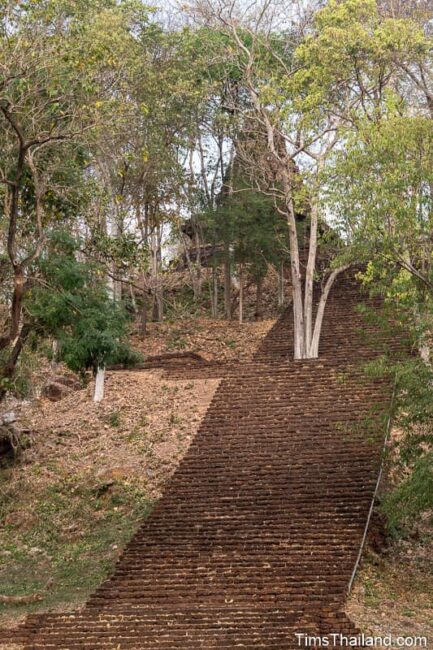
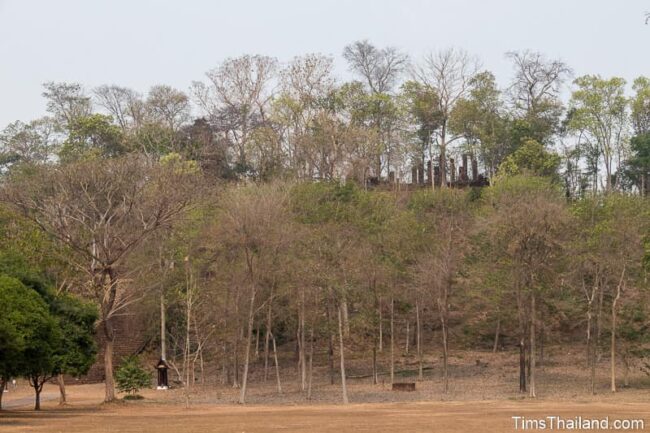
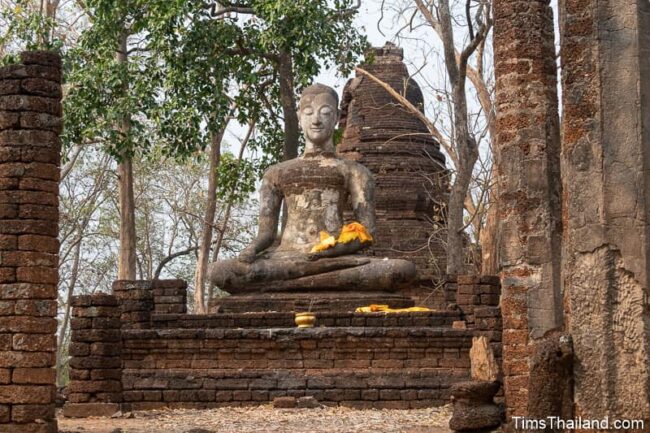
At the peak of this same hill, the large stupa of Wat Khao Suwan Khiri is the one you can see from the suspension bridge as you enter the town. There’s an almost ancient looking view of Chang Lom and Chedi Jet Thaew’s stupas poking out of the forest canopy down below.
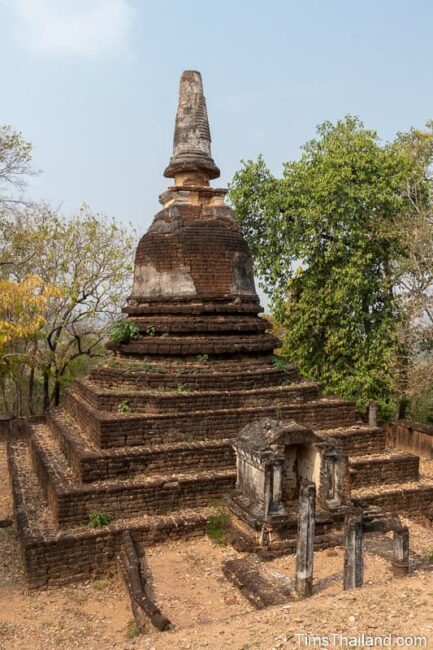
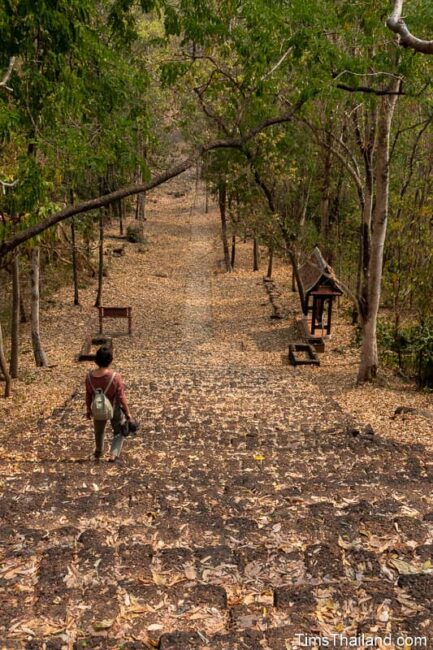
Turiang Kilns
North of the walled city along the river was once Southeast Asia’s most important pottery district. Initially just made for local use, Sangkhalok pottery, as it was known, became an important export product with a variety of styles shipped as far as Indonesia and Japan.
Over 200 giant kilns have been uncovered here and some have been excavated and partially restored at The Centre for Study & Preservation of Sangkhalok Kilns museum. It has two locations, five and six kilometers away from the old city: one built around earthen kilns and the other around brick kilns. Both places have some of the original wares on display and informative signs in English explain everything you’re likely to ever wonder about Sangkhalok pottery. As a bonus, a few families out here continue the pottery tradition.
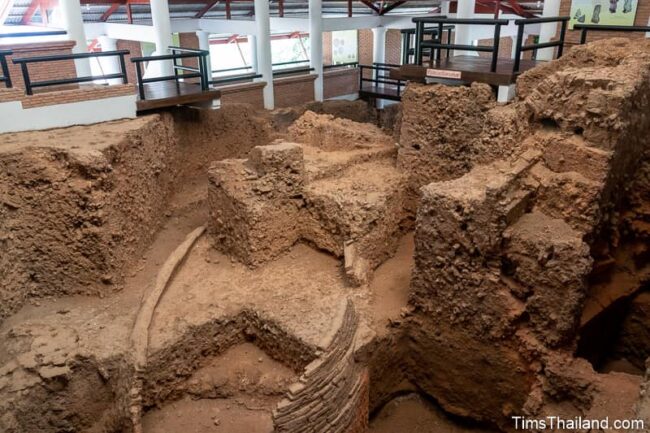
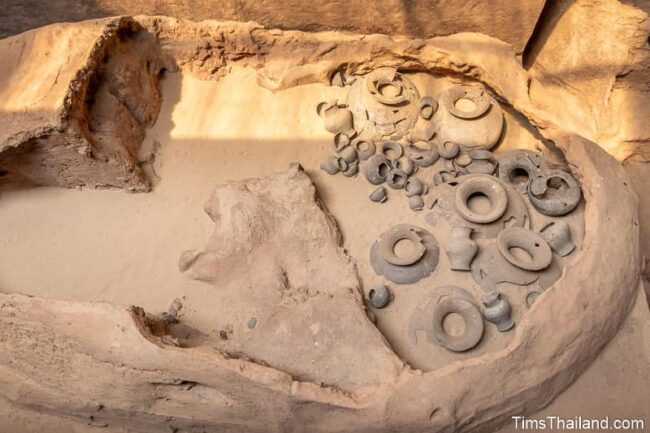
It’s a nice rural bike ride out to the museums, but if you can’t make it up to the main sites, then you can at least get a taste of things at the partially restored Ban Pa Yang kiln just 500m past the city’s northwestern Tao Moh Gate.
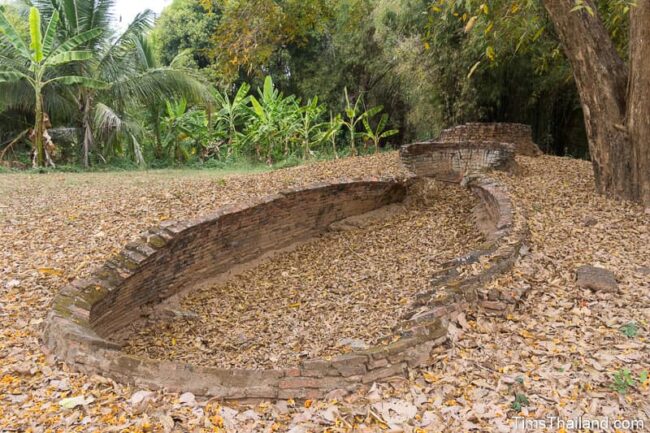
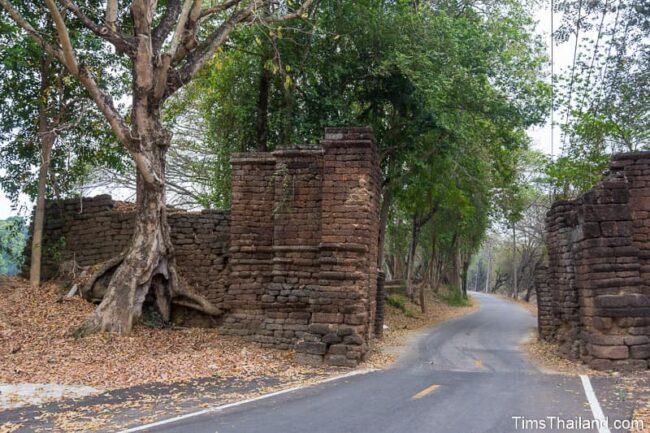
Make it Happen
Bikes, which can be hired at the park and the little general store next to the bus stop, are the best way to get around, though you can drive your own car to all the places outside the royal compound.
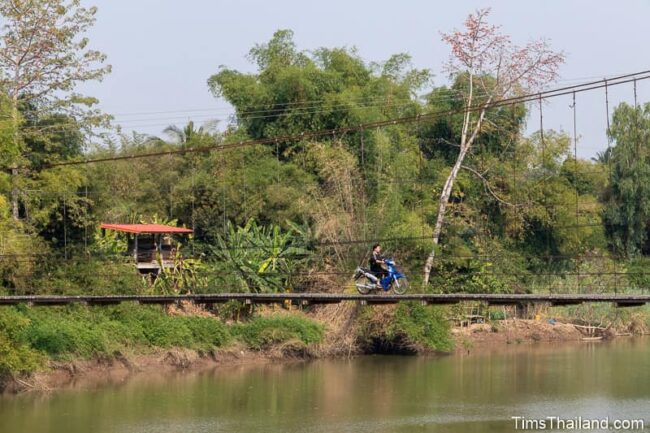
It’s possible to do Si Satchanalai as a daytrip from Sukhothai, but the rustic appeal that makes the ruins such a great place to visit extends to the adjacent village, making this a great place for cultural travelers to stay a while. Conveniently located just 600m from the suspension bridge where busses stop (tell the driver “Wat Pra Prang”) is the friendly and super-clean Papong Homestay. A level of comfort up, Sisatchanalai Heritage Resort has ten bungalows and a restaurant right on the river.